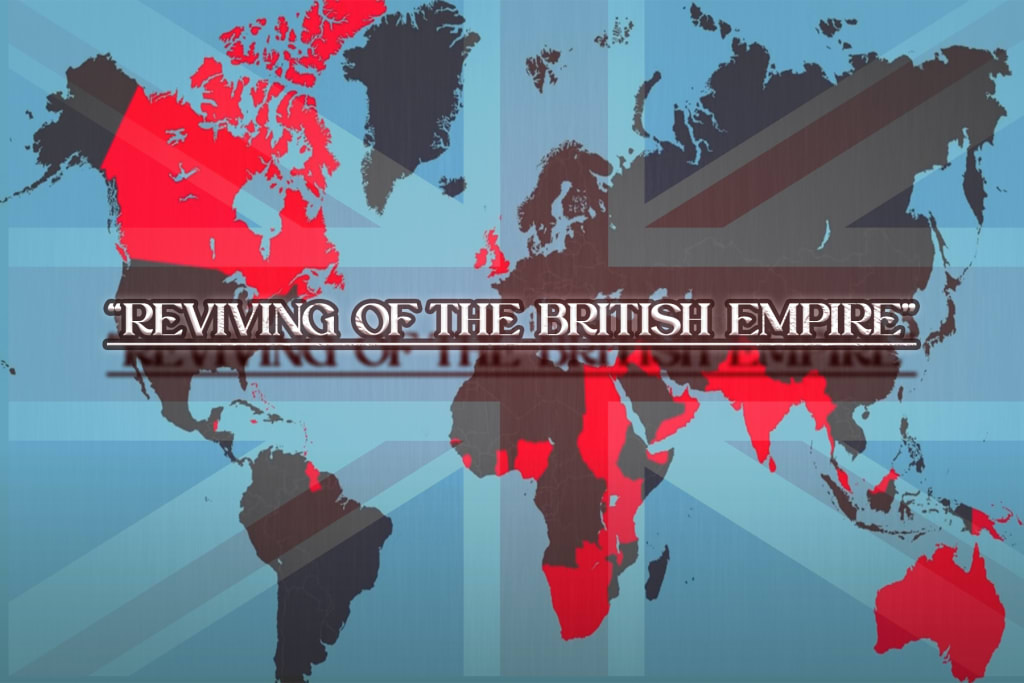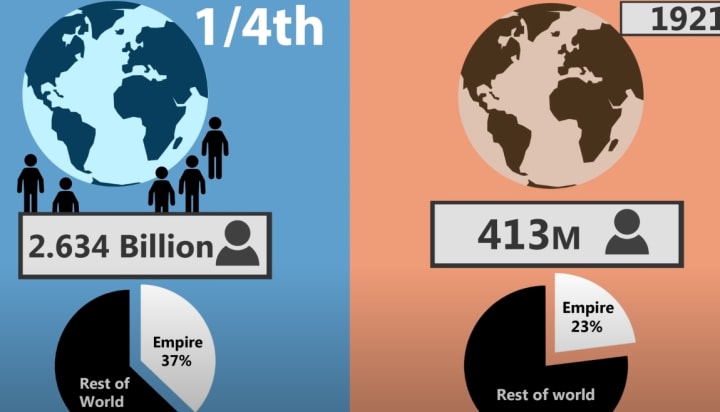"Reviving the British Empire: Imagining a Contemporary Reunion"
"Exploring the Potential Impact and Dynamics of a Hypothetical Reunion in Today's World"

The British Empire stands as the largest empire in human history, reaching its territorial peak in 1921 following its triumph in World War I. At its zenith, the empire stretched across 35,500,000 square kilometers (14,000,000 square miles) and boasted a population of 413 million individuals, constituting approximately 23% of the global population at that time. To grasp its vastness, consider that it would have covered 94% of the entire lunar surface. So, when you gaze at the half of the moon visible from Earth each night, it serves as a poignant reminder that the British Empire once commanded a domain nearly twice that size. It was famously said that the sun never set on the British Empire, signifying that somewhere within its expansive reach, daylight was always present. However, even the mightiest empires must eventually yield to the passage of time.
The dissolution of the British Empire saw its final African colony gain independence in 1980, while the iconic city of Hong Kong was returned to China in 1997, marking a symbolic end to the empire's once vast dominion. However, envisioning a scenario where the empire is reconstituted today reveals a staggering scope. Currently, Queen Elizabeth II reigns over 16 nations, having previously been queen of an additional 17. If the empire were revived, it would encompass a total of 64 countries.
This resurrected empire would be a colossus, dwarfing the current United Kingdom by 146 times in territorial expanse. Furthermore, its population would swell to 40 times the size of the present UK populace. A quarter of the planet's land area would fall under its domain, indicative of its immense territorial reach.
With a population of 2.634 billion, approximately 37% of the global populace would find themselves under the umbrella of this empire. Such a figure far surpasses the percentage in 1921, underscoring the extraordinary influence and dominance it would wield on the world stage.

Despite its vast territorial expanse and substantial population, the reestablished British Empire would possess a GDP of US$13.078 trillion, ranking it as the world's second-largest economy, trailing behind the United States. However, the prosperity would not be evenly distributed among its citizens, with the average individual earning a modest US$4,966 annually placing them slightly below the poverty line, comparable to present-day Namibia.
To compensate for this economic disparity, the British Empire would boast the largest military force globally, comprising 4,917,000 active-duty soldiers. With a military budget of US$268.175 billion, it would hold the second-highest defense expenditure worldwide, albeit still less than half of the United States' military budget. Despite its economic challenges, the empire's military might would be formidable, reflecting its historical legacy and aspirations for global influence.
Comparing the resurrected British Empire to other historical empires, it would emerge as the second strongest nation globally, second only to the United States. However, in contrast to empires like the Roman and Mongol, it would exhibit distinct characteristics. While boasting a larger population than both the Roman and Mongol Empires, its economy and the standard of living for its citizens would fall short of these predecessors. The Mongol Empire would particularly surpass it in military size.
The largest city within the British Empire would be Karachi in Pakistan, with the top five largest cities, except Lagos in Nigeria, situated on the Indian Subcontinent. In a remarkable demographic shift, nine out of the top 10 largest cities would be located in either Asia or Africa. Notably, London, though not the largest city within the empire, would likely assume the role of its capital due to its historical significance as the capital of the British Empire.
English would inevitably serve as the official language of the Empire, despite being the native tongue of only five percent of its population. However, it would be widely understood as a secondary language by 17% of the populace, given its status as an official language in 49 out of the 64 countries constituting the Empire.
Hindi would emerge as the predominant language, spoken by 20% of the population, with Bengali and Urdu also holding significant linguistic sway. The Empire's ethnic and religious landscape would be exceptionally diverse, with only 5% of the population classified as white. Asian and Pacific Islander communities would comprise the majority, making up 69% of the populace, with India alone contributing nearly half of the Empire's total population.
African and Afro-Caribbean ethnicities would constitute 19% of the population, while Arabs and other Middle Eastern groups would comprise the remaining 7%. Interestingly, the United Kingdom itself would represent only a small fraction, contributing just 2.4% to the Empire's overall population.
The religious diversity within the Empire would be vast, if not even more extensive. Hinduism would emerge as the largest single faith, representing 40% of the total population. Islam would follow closely at 33%, divided between 32% Sunni and 1% Shia.
Christianity would account for 19% of the population, with 12.6% being Protestants, 6% Catholics, and 0.4% Orthodox. Buddhism would represent 3%, while Sikhs would make up 0.8% and Jews 0.2%. Other religions would collectively constitute 2.2%, with atheists or non-believers comprising the final 2% of the population.
Interestingly, the addition of the original 13 American colonies from the US back into the Empire would significantly boost its GDP by over US$6 trillion, equivalent to 47% of the Empire's GDP before their inclusion. In such a scenario, these colonies would undeniably become the most valuable assets of the British Empire.
The looming question, however, remains whether the US would permit such a reintegration to occur.
So, thank you so much for reading.
To stay updated with content just like this in the future.
Please leave your thoughts and comments about what this Empire would look like and how it would act in the real world and don't forget to give it a like if you enjoyed it as well.
Thank you very much for reading.
And I'll see you around next time.
About the Creator
Wali Ahmed Khan
I'm uncovering untold stories or shedding light on pressing issues. I remain dedicated to my craft, driven by a passion for storytelling and a commitment to excellence.
Enjoyed the story? Support the Creator.
Subscribe for free to receive all their stories in your feed. You could also pledge your support or give them a one-off tip, letting them know you appreciate their work.






Comments
There are no comments for this story
Be the first to respond and start the conversation.